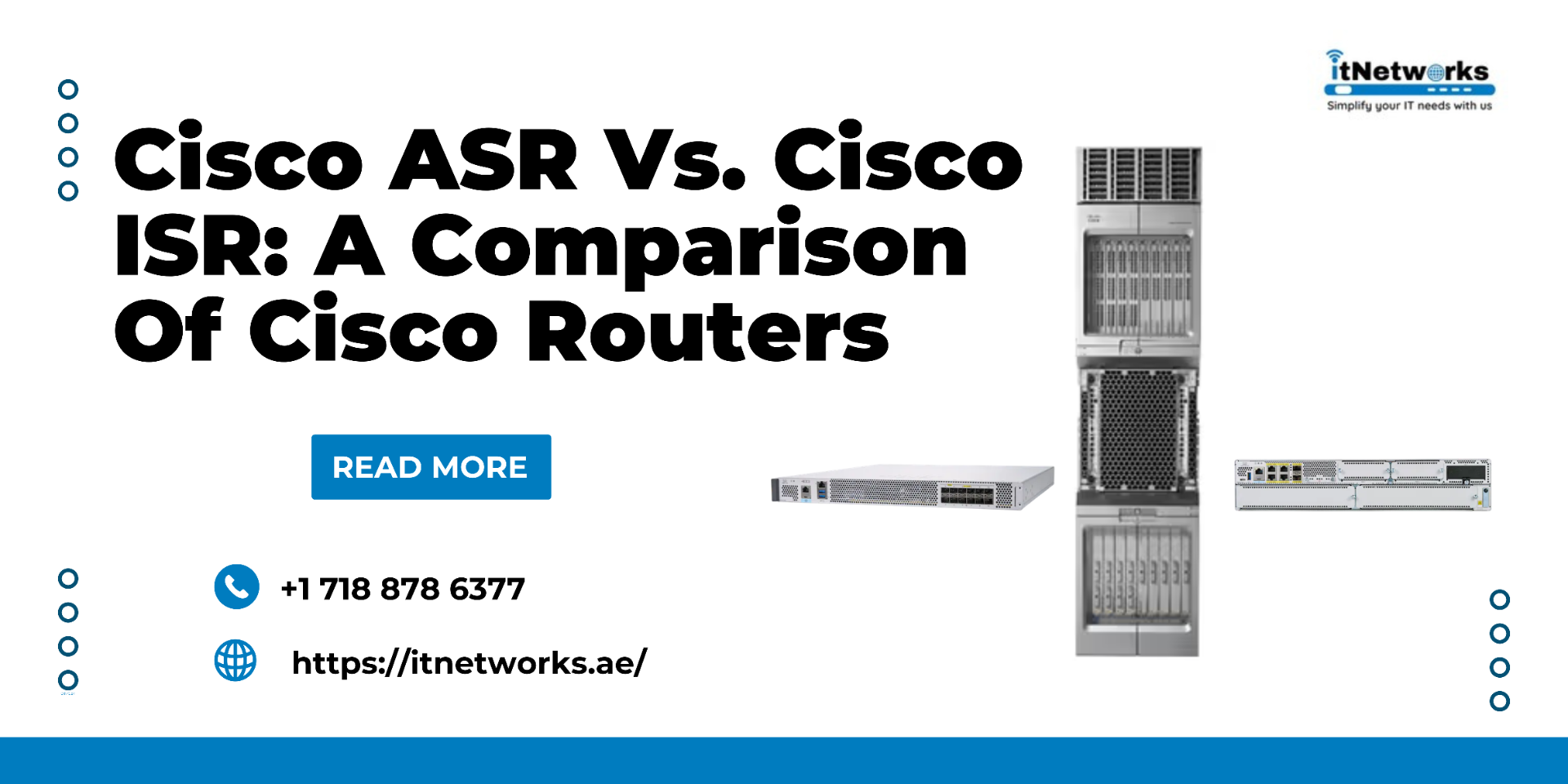Cisco ASR vs. Cisco ISR: A Comparison of Cisco Routers
Cisco Systems, a well-known networking solutions company, offers a variety of high-performance routers to meet a variety of network requirements. The ASR (Aggregation Services Router) and ISR (Integrated Services Router) are two well-known Cisco router series. The purpose of this post is to compare the qualities, functions, and applications of Cisco ASR and Cisco ISR routers.

Introduction to Cisco ASR
High-performance, high-bandwidth network environments are the focus of the design of Cisco ASR routers. They are frequently used in data centers, big enterprise networks, and service provider networks. ASR routers can handle a lot of traffic and enable modern technologies like virtualization, video streaming, and cloud services because they have advanced forwarding capabilities, vast scalability, and high-density interfaces. The ASR series offers a number of models, each catering to particular network requirements, such as the ASR 9000, ASR 1000, and ASR 900.
Introduction to Cisco ISR
Routers like the Cisco ISR combine routing, switching, security, and other networking functions into a single unit. They are appropriate for branch offices, enterprise edge deployments, and small to medium-sized organizations. ISR routers are the best choice for integrating network services and lowering operational complexity since they offer a wide range of capabilities like built-in security, application visibility, and WAN optimization. Models of the ISR series, including the ISR 4000, ISR 2900, and ISR 1900, are designed to meet various network sizes and requirements.
Comparison of Features
- Performance: When compared to ISR routers, Cisco ASR routers offer better forwarding performance and throughput. They are made to manage expansive networks with rigorous traffic demands.
- Scalability: ASR routers have outstanding scaling capabilities, supporting numerous interfaces and scaling up to terabit capacity. ISR routers offer scalability options for expanding networks but are better suited for smaller deployments.
- Services and Applications: ASR routers are perfect for service provider environments because they deliver advanced features like Carrier Ethernet, MPLS (Multiprotocol Label Switching), and IP/MPLS (Internet Protocol/Multiprotocol Label Switching) VPNs. ISR routers are ideal for branch offices and small to medium-sized organizations since they have integrated security features, application optimization, and WAN acceleration capabilities.
- Redundancy and High Availability: Both ASR and ISR routers provide high availability features, including redundant hardware and power supplies, resulting in a reduced amount of downtime and increased dependability.
- Form Factor: ASR routers often come in rack-mounted configurations that are appropriate for use in data centers and on a large scale. ISR routers are flexible for many deployment scenarios and are available in a range of form factors, including desktop, rack-mountable, and modular versions.
Usage
In order to manage high-capacity traffic and enable sophisticated services like video streaming, cloud connectivity, and virtualization, ASR routers are frequently used in service provider networks. Additionally, they are used in data center settings where high-performance routing and combining features are necessary.
Small to medium-sized organizations, branch offices, and enterprise edge installations all use ISR routers. They operate well for streamlining network services, enhancing the performance of applications, and supplying safe connectivity to faraway locations.
The Cisco ASR and Cisco ISR routers serve various network needs. While ISR routers provide flexible functionality for smaller deployments, ASR routers excel in high-performance, large-scale applications. Which router series is suitable for your company will depend on your understanding of the particular requirements of your network.





